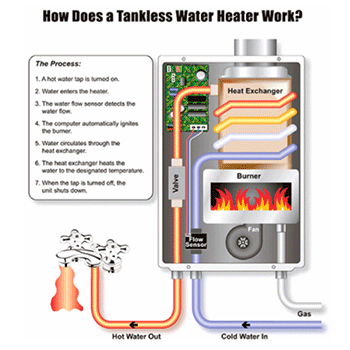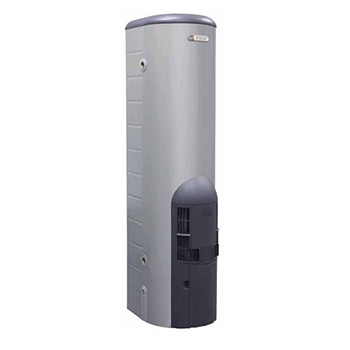There are many brands of continuous flow hot water heaters including, Rinnai, Rheem, Dux, Bosch as well as various sizes to suit any application.
Continuous flow hot water heaters can be manifolded and even coupled with a storage tank, where the water is heated by the continuous flow hot water heater, then stored in the storage tank to allow for large volumes of hot water ready for use. This application is most used on hotels or large commercial sites requiring large volumes of hot water while still remaining cost effective. Modern continuous flow hot water heaters do not require pilot lights, therefore saving the average household approximately $70 a year (average cost to run a pilot light per annum).
Whilst they consume large amounts of gas initially to get the water up to temperature, the gas flames are designed to modulate, therefore as the heat exchanger heats up and begins heating the incoming water, less energy is required to maintain the heat, therefore becoming very cost effective to run. Continuous flow hot water heaters can be installed inside or outside. Inside heaters require adequate and proper fluing to ensure customer safety and to meet Australian Standards. They also require proper planning when installing to ensure adequate gas supply to the heater for correct and safe operation.
An undersized / oversized gas supply to a hot water heater can work inefficiently and be very dangerous. Speak to us for professional advice about sizing a continuous flow hot water heater adequately to meet your immediate and ongoing needs. Continuous flow hot water heaters are generally sized based on the number of hot outlets its needs to serve. For a two bathroom household you typically need a 20-24lt per minute flow rate (size) hot water heater, however every application is different and can sometimes depend on available gas pipe size and cold water inlets. Always ensure that all hot water heater installations are carried out by a licensed plumber and installed in accordance with AS3500 Australian Standards.



